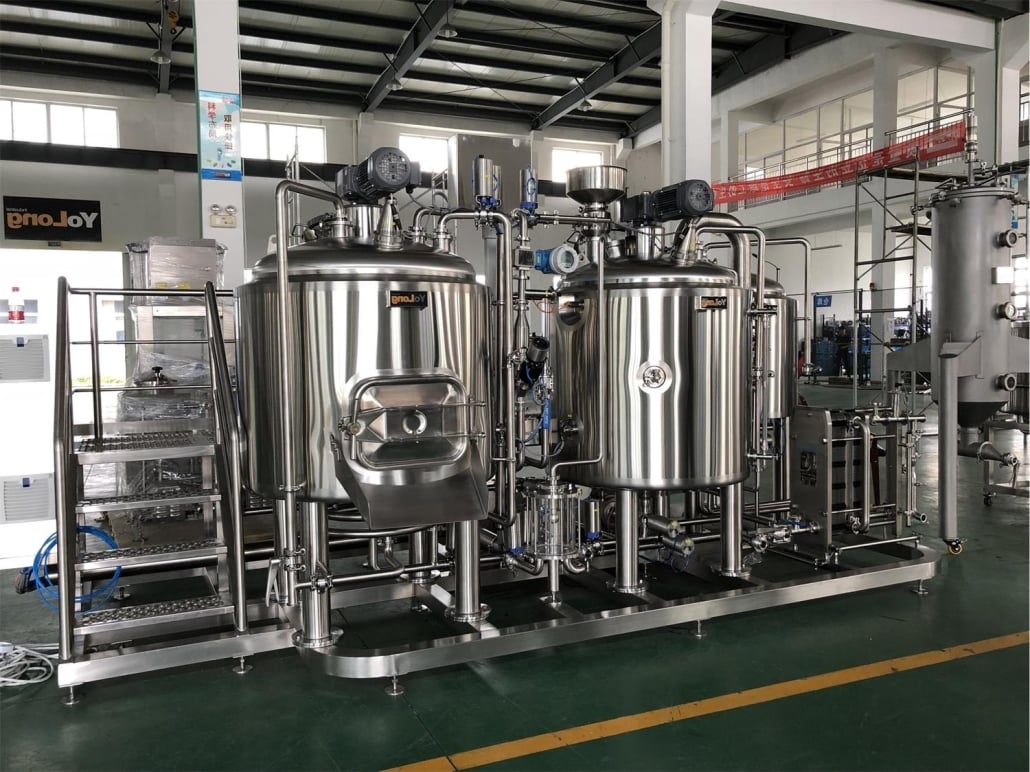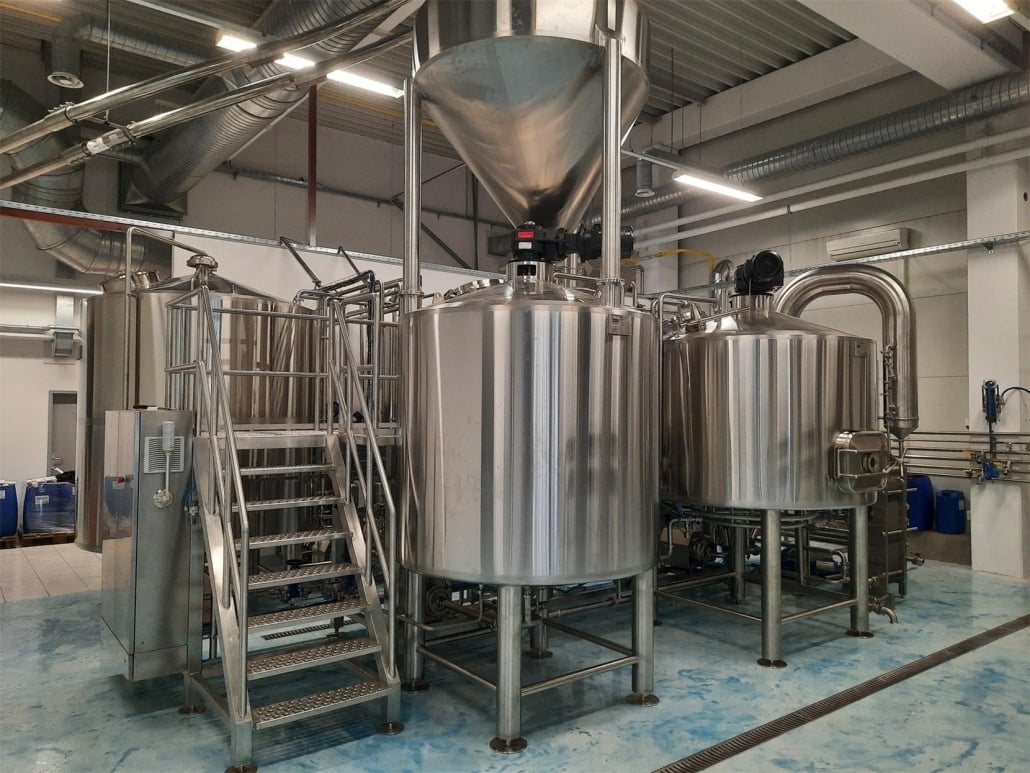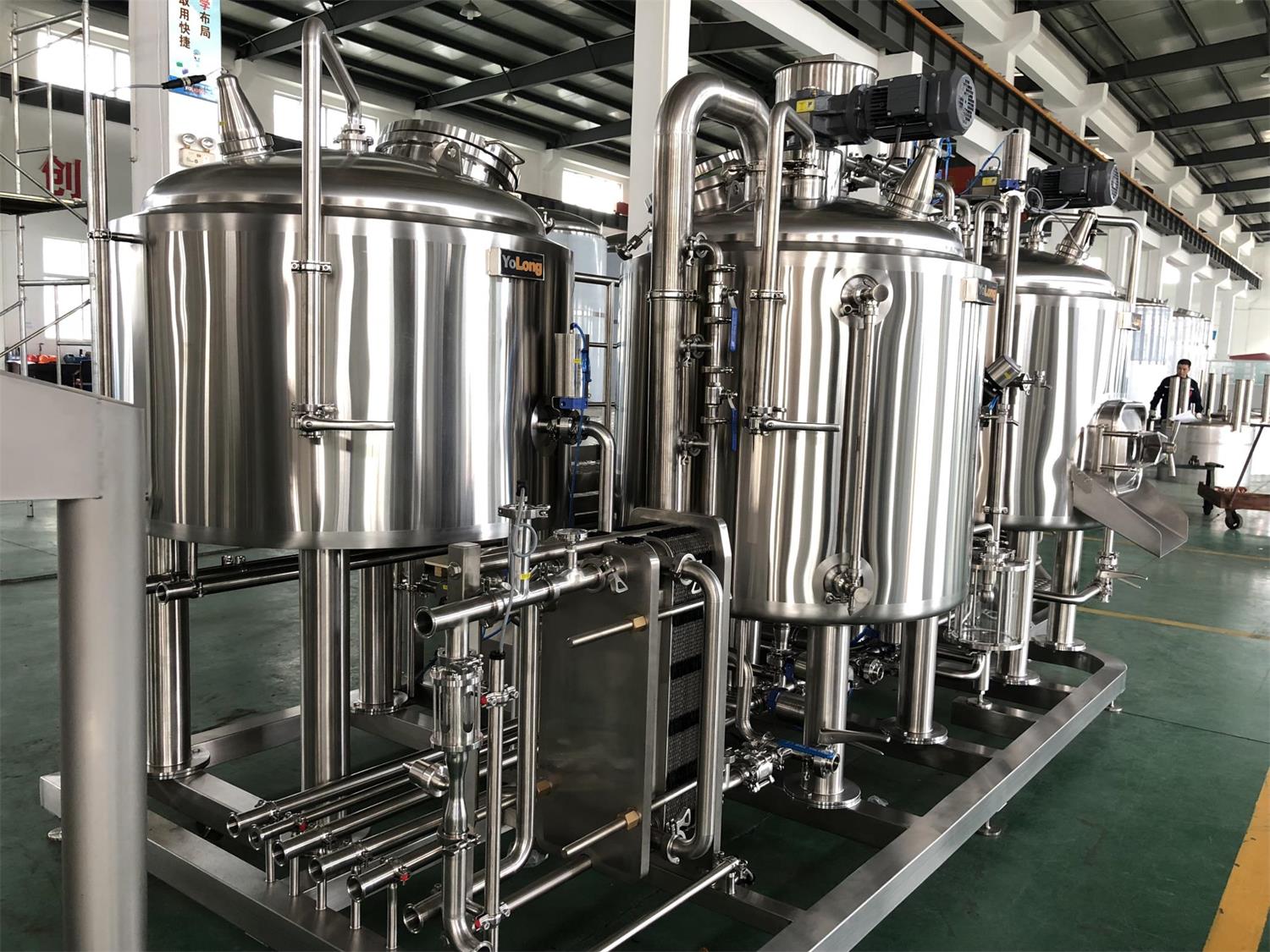10 Bbl Brewery
The craft beer scene is booming, with passionate brewers constantly innovating and pushing the boundaries of flavor. If you’ve ever dreamt of starting your own brewery, a 10-barrel (bbl) system might be the perfect place to begin your journey. But before you dive headfirst into the world of hops and malts, let’s explore the intricacies of a 10 bbl brewery, from its equipment needs to the brewing process itself.
Understanding 10 Bbl Breweries
A 10 bbl brewery refers to the production capacity of the brewing system. In simpler terms, a 10 bbl system can brew 10 barrels of wort (unfermented beer) per batch. One barrel translates to approximately 31 gallons, so a 10 bbl batch yields roughly 310 gallons of wort, which after fermentation becomes about 300 gallons of finished beer.
Why Choose a 10 Bbl Brewery System?
There are several reasons why a 10 bbl system might be ideal for aspiring brewers:
- Scalability: It offers a manageable size for starting a brewery, allowing you to test recipes, build a customer base, and refine your brewing process before scaling up production.
- Cost-Effectiveness: Compared to larger systems, 10 bbl setups require a lower initial investment in equipment and space. This makes it a more accessible option for new brewers with limited capital.
- Flexibility: A smaller system allows for greater experimentation with unique beer styles and smaller batch sizes, catering to niche markets or seasonal offerings.
- Community Focus: Many 10 bbl breweries cater to local communities, fostering a strong connection with their customer base and creating a unique brand identity.

Essential Equipment for a 10 Bbl Brewery
Here’s a breakdown of the key equipment you’ll need for your 10 bbl brewery:
| Equipment | Description |
|---|---|
| Mash/Lauter Tun (MLT): | This vessel steeps the grains in hot water to extract sugars and flavors, creating the wort. |
| Brew Kettle: | The wort is boiled in this kettle with hops for bitterness, aroma, and preservation. |
| Whirlpool: | This tank separates the wort from the solids (hops) through a centrifugal force before fermentation. |
| Fermentation Tanks: | Yeast is added to the wort in these tanks, converting sugars into alcohol and carbon dioxide, transforming it into beer. |
| Brite Tanks: | After fermentation, beer is conditioned and clarified in these tanks before packaging. |
| Cooling System: | Wort needs to be chilled after boiling to promote proper yeast fermentation. |
| Cleaning and Sanitation Equipment: | Maintaining a clean and sanitary environment is crucial for quality beer production. |
The Brewing Process in a 10 Bbl Brewery
While the core principles of brewing remain the same regardless of system size, a 10 bbl setup requires a more hands-on approach from the brewer. Here’s a simplified overview of the brewing process:
- Grain Milling: Grains are crushed to expose starches for optimal sugar extraction during mashing.
- Mashing: Crushed grains are steeped in hot water at specific temperatures to convert starches into fermentable sugars.
- Lautering: The sweet liquid (wort) is separated from the spent grains.
- Boiling: The wort is boiled in the kettle with hops, adding bitterness, aroma, and acting as a natural preservative.
- Whirlpooling: The hot wort is spun rapidly to separate out hop residue before transferring it to fermentation tanks.
- Fermentation: Yeast is pitched into the cooled wort, converting sugars into alcohol and carbon dioxide, creating beer.
- Conditioning: After fermentation, the beer is conditioned in brite tanks for clarification and stabilization.
- Packaging: The finished beer is packaged in kegs or cans for distribution and consumption.
Space Requirements and Brewery Layout
The space needed for a 10 bbl brewery will vary depending on your equipment configuration and desired production capacity. However, a general rule of thumb suggests allocating at least 2,500 square feet for a comfortable workspace. This area should encompass:
- Brewhouse: This is the heart of the operation, housing the MLT, brew kettle, whirlpool, and associated piping.
- Fermentation Room: Fermentation tanks and brite tanks need a dedicated space with temperature control capabilities.
- Cold Storage: Adequate space is needed for storing ingredients like hops and kegs.
- Packaging Area: This area will house equipment for kegging or canning your beer, along with labeling and storage space for finished products.
- Quality Control Lab: A designated area for testing and monitoring beer quality throughout the brewing process is essential.
- Office Space: Don’t forget about a dedicated space for administrative tasks, recordkeeping, and potentially a tasting room for customer interaction.
While designing your brewery layout, prioritize a logical flow for the brewing process. This minimizes unnecessary movement of equipment and materials, improving efficiency and safety.
Customization Options for 10 Bbl Breweries
The beauty of a 10 bbl system lies in its potential for customization. Here are some ways to personalize your brewery:
- Heating Source: You can choose between direct-fired (using natural gas) or steam-heated systems, each with its own advantages and considerations.
- Automation Level: The level of automation you incorporate can significantly impact your workflow. While a manual system allows for greater control, a semi-automated or fully automated setup can save time and labor costs.
- Fermentation Tank Options: From traditional conical fermenters to cylindroconical tanks (CCTs), the type of fermentation tanks you choose will influence factors like space utilization and beer styles you can produce.
10 Bbl Brewery Price Range
The cost of a 10 bbl brewery system can vary depending on several factors, including:
- Equipment Features: More sophisticated features like automation or specific materials will drive the price up.
- New vs. Used Equipment: Purchasing pre-owned equipment can offer significant cost savings, but be sure to factor in potential maintenance and repair needs.
- Local Regulations: Permitting and licensing requirements can impact the overall cost.
As a ballpark estimate, expect a 10 bbl brewery system to range from $150,000 to $400,000. Remember, this is just an estimate, and the actual cost can fall outside this range depending on the factors mentioned above.
Suppliers of 10 Bbl Brewery Systems
Numerous reputable companies specialize in designing and manufacturing 10 bbl brewery systems. Here are a few examples to get you started:
- American Brewer: Renowned for their high-quality, customizable brewing systems.
- DME Brewing Systems: Offers a wide range of 10 bbl systems to suit various needs and budgets.
- SS BrewTech: Provides user-friendly and scalable brewing systems for craft breweries.
Installation, Operation, and Maintenance
Installing a 10 bbl brewery system requires expertise to ensure proper functionality and safety. Many suppliers offer installation services or can recommend qualified professionals for the job.
Operating and maintaining a 10 bbl brewery requires a commitment to cleanliness, sanitation, and following proper brewing procedures. Regular cleaning and maintenance routines are crucial for producing high-quality beer and extending the lifespan of your equipment.
Choosing the Right 10 Bbl Brewery Supplier
Selecting the right supplier for your 10 bbl brewery system is a crucial decision. Here are some key factors to consider:
- Reputation and Experience: Choose a company with a proven track record of designing and manufacturing reliable brewing systems.
- Customization Options: Does the supplier offer the level of customization you desire for your brewery setup?
- Service and Support: Reliable after-sales service and technical support are essential for ongoing maintenance and troubleshooting.
- Price vs. Value: While cost is important, prioritize value by considering the quality, features, and overall package offered by the supplier.
Pros and Cons of a 10 Bbl Brewery
Pros:
- Scalability: Ideal for starting small and scaling up production as your business grows.
- Cost-Effectiveness: Lower initial investment compared to larger systems.
- Flexibility: Enables experimentation with a wider variety of beer styles and batch sizes.
- Community Focus: Fosters a strong connection with local customers and builds a unique brand identity.
Cons:
- Hands-on Approach: Requires a more hands-on approach from the brewer compared to larger, automated systems.
- Limited Production Capacity: May not be suitable for breweries aiming for high-volume production.
- Space Requirements: Still requires a dedicated space to house equipment and operations.

FAQ
| Question | Answer |
|---|---|
| What is the difference between a 10 bbl brewery and a microbrewery? | There’s no universally agreed-upon definition, but generally, a microbrewery produces less beer than a 10 bbl brewery. The focus of a microbrewery is often on quality, unique beers and catering to a local market, rather than production volume. However, a 10 bbl brewery doesn’t automatically qualify as a microbrewery. Legal definitions of “microbrewery” vary by region, so it’s important to consult your local regulations. |
| How much beer can a 10 bbl brewery produce? | A 10 bbl system can brew approximately 300 gallons of finished beer per batch. The exact amount can vary depending on factors like boil-off and fermentation efficiency. With multiple brews per week, a 10 bbl brewery can produce a significant amount of beer, though not at the scale of larger production breweries. |
| Can I open a 10 bbl brewery in my garage? | Local zoning regulations will determine the feasibility of operating a brewery in a residential area. Most likely, you’ll need a dedicated commercial space to house your brewing equipment and meet safety and licensing requirements. |
| What licenses and permits do I need to open a 10 bbl brewery? | Permitting requirements can vary depending on your location. Generally, you’ll need licenses for food and beverage production, alcohol manufacturing, and potentially a business license. Consulting with a lawyer specializing in beverage alcohol laws is recommended to ensure you comply with all necessary regulations. |
| Is it profitable to open a 10 bbl brewery? | Profitability depends on several factors, including your business plan, marketing strategy, production costs, and market saturation. While some 10 bbl breweries thrive, success requires careful planning, financial acumen, and a passion for brewing high-quality beer. |
Conclusion
The decision to open a 10 bbl brewery is a significant one. Carefully consider your goals, resources, and market before taking the plunge. If you’re passionate about craft beer, enjoy a hands-on approach, and want to build a community-focused brewery, a 10 bbl system might be the perfect springboard for your brewing dreams. Remember, success requires not only brewing delicious beer but also a well-defined business plan, marketing strategy, and financial discipline. With dedication and hard work, your 10 bbl brewery can become a thriving local business, a source of community pride, and a testament to your passion for the craft of brewing.
Share this entry
Interested in learning more about Brewing Systems including additional details and pricing information? Please use the form below to contact us!
YOLONG BREWERY EQUIPMENT FAQS
- Commercial Brewery / Craft Brewery / Microbrewery / Nanobrewery
- What is The Difference Between Craft Beer and Industrial Beer?
- The Bespoke Differences In Custom Brewing Systems
- Everything You Need to Know About Kettle Souring
- How to Choose Brewing Equipment for Your business?
- How To Choose The-Best Partner To Build Your Commercial Microbrewing System?
- Two Detection Sensors That You Need To Use In Your Brewhouse System
- Remote Control Applications in Brewing Equipment/How does it work?
- How To Clean Your Brand New Brewery Tanks?

